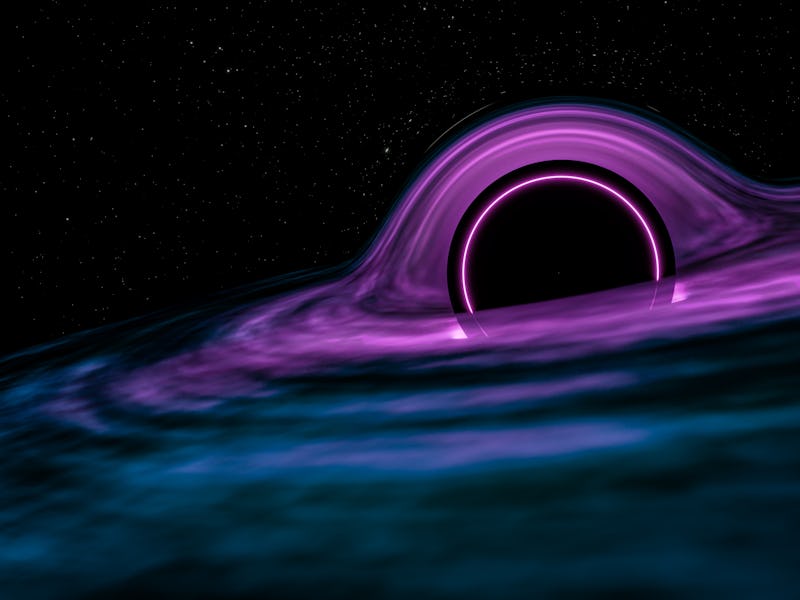Bleeding-edge computers could explain a hole in Einstein's most famous theory
Understanding the inside of a black hole is still a bit of a black box.

Both quantum computing and machine learning have been touted as the next big computer revolution for a fair while now. However, experts have pointed out that these techniques aren’t generalized tools — they will only be the great leap forward in computer power for very specialized algorithms, and even more rarely will they be able to work on the same problem. One such example of where they might work together is modeling the answer to one of the thorniest problems in physics: How does General Relativity relate to the Standard Model?
A team led by researchers at the University of Michigan and RIKEN think they might have developed such an algorithm. There aren’t many places where the two great physics models collide, but around a black hole is one of them. Black holes themselves are massive gravity wells ruled entirely by the physics defined by General Relativity. However, innumerable particles are swirling around their event horizons that are effectively immune to gravity but do fall under the Standard Model structure, which deals directly with the physics of particles.
There has been a long-standing theory that the motions and accelerations of the particles directly above a black hole might be a two-dimension projection of what the black hole itself is doing in three dimensions. This concept is called holographic duality and might offer a way to look for that critical interface between relativity (i.e., black hole physics) and the Standard Model (i.e., particle physics).
UT video discussing the Holographic Principle
Holographic duality itself is challenging to model with modern-day computing algorithms, though. So Enrico Rinaldi, a physicist at the University of Michigan and RIKEN, attempted to develop a new model that utilized those two very hyped computing architectures — quantum computing and machine learning.
Quantum computing itself can be helpful in modeling particle physics, as some of the physics underlying the computing platform itself are subject to those physical laws that are so foreign to us at a macro scale. In this case, Dr. Rinaldi and his team used an algorithm running on a quantum computer to simulate the particles that make up the project part of the holographic duality.
To do so, they utilized a concept called a quantum matrix model. As with many physics simulations, the end goal of the simulation was to find the lowest energy state of the system. Quantum matrix models would help effectively solve the optimization problems that would find the lowest energy state of the particle systems projected above a black hole.
PBS Space Time video explaining how we might just live in a hologram.Credit – PBS Space Time YouTube
Algorithms utilizing a quantum computer aren’t the only way to find those “ground states,” as the lowest energy state of the system is called. Another method would be to utilize a type of AI technique called a neural network. These are based around using systems similar to those found in human brains.
The team applied these algorithms to a type of matrix model still based on quantum ideas but not requiring quantum computing. Known as a quantum wave function, these again represented the activity of the particles on the surface of the black hole. And once again, the neural network algorithm was able to solve the optimization problem and find its “ground state.”
According to Rinaldi, these new techniques represent a significant improvement upon other previous efforts at solving these algorithms. “Other methods people typically use can find the energy of the ground state, but not the entire structure of the wave function,” Rinaldi said in a press release.
What this means for understanding the inside of a black hole, or the interface between the standard model and general relativity, is still a bit of a black box. Theoretically, there should be a way to model the inside of a black hole using the types of quantum wave functions defined by these algorithms. But that work, which could lead to an underlying quantum theory of gravity according to Rinaldi, remains to be done. As these hyped computing architectures continue to gain in popularity, though, it’s almost a certainty that someone will attempt to shine some light on that black box.
This article was originally published on Universe Today by Andy Tomaswick. Read the original article here.